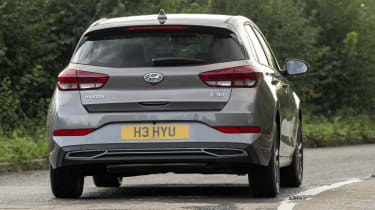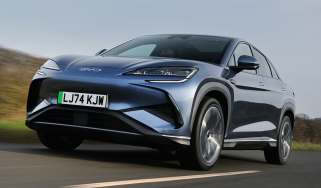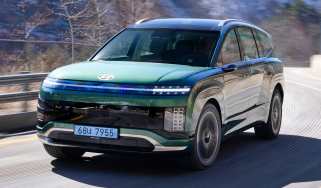Hyundai i30 hatchback - Engines, drive & performance
The Hyundai i30 is a genuinely impressive motorway cruiser, but it’s a shame tighter roads reveal shortcomings
If you’re in the market for a family hatchback that thrills, impresses and entertains on A and B-roads, you’re better off choosing an alternative to the Hyundai i30 – perhaps a Ford Focus or SEAT Leon. Although the i30 develops little body lean when cornering, we found its steering too sensitive and the wheel needed frequent corrective inputs to keep the car running in a straight line.
In fairness, some will see that as a benefit – the MINI hatchback, for instance, has lively and sharp steering, which makes country-lane drives an intuitive and sprightly experience. But while the MINI backs up this liveliness with plenty of steering ‘feel’, the i30’s wheel seemed somewhat inert and lifeless in our hands, providing little information on how much grip the front wheels had. We also found the suspension a little too unsettled around town.
Yet all that’s forgotten as soon as you get up to motorway speeds, where the i30 genuinely impresses. Wind and road noise are minimal and the overall impression is of a competent, comfortable and effortless long-distance cruiser. The i30 manages to feel like a far larger car on the motorway with regard to how planted and civilised it seems.
More reviews
The sporty N-Line model – the only recipient of the 1.5-litre engine – benefits from chassis revisions, an updated suspension setup and superior brakes. It handles better than the standard car but the engine feels overly restrained when you compare it to the more powerful 2.0-litre engine in the i30 N. Be prepared for a firm ride too, as Hyundai has paired the sporty looks with stiffer suspension.
Hyundai i30 petrol engines
The entry-level 1.0-litre turbocharged three-cylinder petrol engine will be good enough for many buyers, getting the i30 from 0-62mph in 11.2 seconds – although a similarly powerful Volkswagen Golf will knock a second off that time and does feel quicker. N Line cars feature a more powerful 157bhp 1.5-litre turbocharged petrol engine, which gets the i30 from 0-62mph in 8.4 seconds with the manual gearbox and 8.6 seconds for the DCT, and has plenty of shove for joining motorways and overtaking slower traffic. Like many turbocharged engines, there’s a bit of a dead spot at very low revs, but once the turbo kicks in, progress is rapid.
Diesel engines
The discontinued 1.6-litre diesel engine was familiar Hyundai fare, with a smooth power delivery and a strong level of refinement. It produced 134bhp, and was available with a choice of a six-speed manual or seven-speed dual-clutch automatic gearbox, with both managing 0-62mph in 10 seconds.














